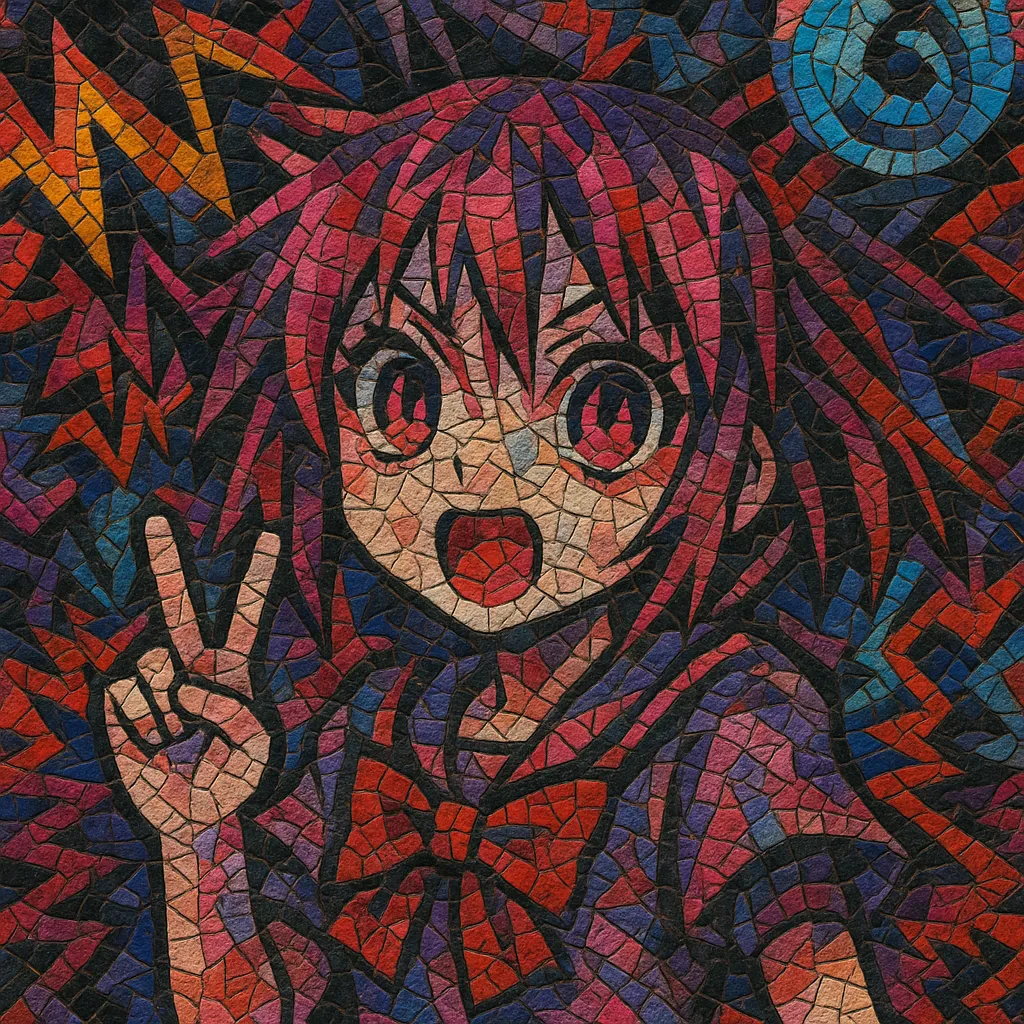Lolicore is an internet-native offshoot of breakcore and speedcore that collides ultra-fast, hyper-edited breakbeats with "kawaii" (cute) Japanese pop-culture aesthetics.
Tracks typically feature frenetic Amen breaks, harsh distortion, sudden BPM swings, and dense sample collages of high-pitched vocals sourced from anime, denpa, or Vocaloid, often cut, timestretched, and repitched to comic or chaotic effect. The result is a deliberately maximalist, irreverent, and noisy sound that juxtaposes sweetness and sonic violence.
The genre grew within netlabel and forum cultures, where DIY production, meme-driven artwork, and tongue-in-cheek titles were as central as the music itself. While musically rooted in breakcore’s editing ethos, lolicore emphasizes cute/otaku imagery, playful shock value, and fast, dance-adjacent rhythms that can veer into speedcore-level intensity.
Lolicore emerged in the mid-2000s within English-speaking online communities and netlabels influenced by Japanese otaku culture. Producers combined breakcore’s cut-up editing with anime/denpa/Vocaloid sampling and speedcore’s BPM extremes, cementing a playful yet abrasive aesthetic. The name references the “loli/kawaii” visual language common in anime fandom, though the music is defined by its sonic and collage practices rather than any specific lyrical theme.
DIY netlabels and forums—alongside platforms like Last.fm and early file-sharing hubs—propelled the style. Releases circulated as free EPs and compilations with pixel-art, pastel palettes, and tongue-in-cheek track titles. The scene’s low barrier to entry—DAWs, break packs, and ripped voice lines—encouraged rapid proliferation. During this phase, the genre’s identity solidified: hyper-cute vocal snippets smashed into harsh breaks and distortion.
Parallel Japanese scenes (J-core, doujin circles) and Western producers traded influences, raising tempos and polish while keeping the irreverent edge. Some artists operated across breakcore, speedcore, and kawaii hardcore, blurring boundaries but retaining lolicore’s emphasis on heavily edited anime/denpa samples and shock-cute aesthetics.
Streaming platforms, Bandcamp, and Discord communities sustained the niche. Lolicore’s aesthetic (cute visuals + noisy maximalism) seeped into broader internet microgenres, while the music itself stayed resolutely underground. Contemporary releases range from tongue-in-cheek meme collages to meticulously engineered, club-capable speedcore hybrids. Ongoing debates concern sampling ethics and imagery, but the core practice—DIY, fast, noisy, and playfully kawaii—remains intact.


